In the vast tapestry of Earth’s biodiversity, some species fade away while others make remarkable comebacks from the brink of extinction. The concept of “extinction” itself is not always as definitive as we might think. Throughout history, numerous animal species have been declared extinct, only to be rediscovered years, decades, or even centuries later. These rediscoveries, known as “Lazarus species,” offer hope in an era of unprecedented biodiversity loss. Here are 12 extraordinary animals that defied the odds and returned from presumed extinction, reminding us that nature can sometimes surprise us in the most wonderful ways.
Coelacanth The “Living Fossil” From the Deep
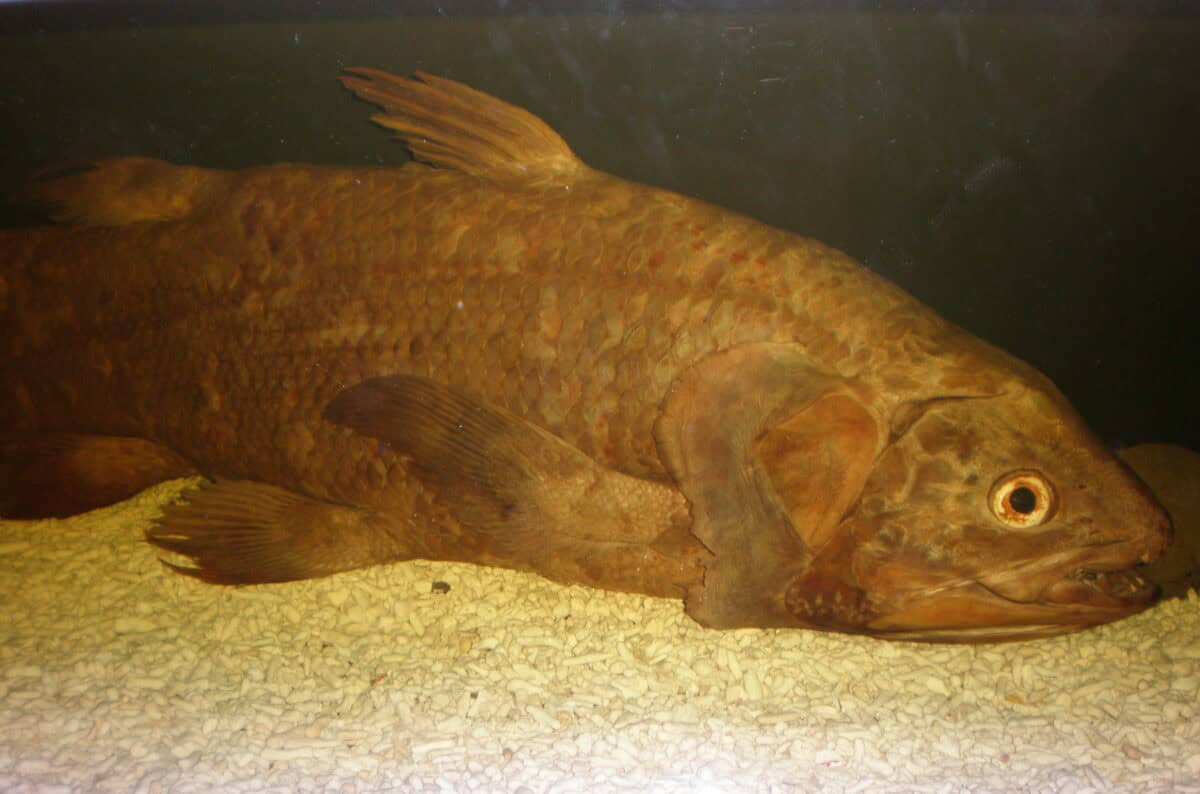
Perhaps the most famous example of a species returning from presumed extinction is the coelacanth, a prehistoric fish that scientists believed had disappeared alongside the dinosaurs about 65 million years ago. This remarkable creature was known only from fossils until 1938, when museum curator Marjorie Courtenay-Latimer discovered a strange fish among the catch of a local South African fishing trawler. The discovery sent shockwaves through the scientific community, comparable to finding a living dinosaur. With its lobed fins that move in an alternating pattern (similar to a tetrapod’s limbs), the coelacanth represents a crucial evolutionary link between fish and land animals. Today, two species of coelacanth are known – the West Indian Ocean coelacanth found near the Comoros Islands, and the Indonesian coelacanth discovered in 1998, living in deep-water caves at depths of 100-500 meters.
Bermuda Petrel The Cahow Returns

The Bermuda petrel, locally known as the “cahow,” was once abundant on Bermuda until European colonization in the early 1600s brought rats, cats, dogs, and pigs that preyed on the ground-nesting birds. By 1620, the species was believed to be extinct. For over 300 years, the cahow existed only in memory and legend, until an extraordinary rediscovery in 1951 when 18 nesting pairs were found on small offshore islets. This rediscovery has been followed by one of conservation’s greatest success stories. Through intensive management, including the construction of artificial burrows and the translocation of chicks to safer islands, the population has gradually increased. By 2022, the population had grown to over 150 breeding pairs. The cahow remains one of the rarest seabirds in the world, but its comeback from presumed extinction represents a beacon of hope for endangered species conservation.
Omura’s Whale Hidden in Plain Sight

Sometimes animals aren’t technically “extinct” but remain unknown to science until surprisingly recent times. Such is the case with Omura’s whale (Balaenoptera omurai), a species that was only scientifically described in 2003 based on specimens previously misidentified as Bryde’s whales. Unlike many other whale species that inhabit colder waters, these medium-sized baleen whales prefer tropical and subtropical waters. For years after its scientific description, the whale was known only from dead specimens until 2015, when researchers documented living individuals off the coast of Madagascar. This marked the first confirmed field observations and video of living Omura’s whales. With their distinctive asymmetrical coloration (white on the right side of the jaw, dark on the left) and relatively small size for baleen whales (approximately 10 meters in length), these elusive creatures remind us that even large marine mammals can evade scientific detection in our vast oceans.
New Guinea Highland Wild Dog Ancient Canine Rediscovered
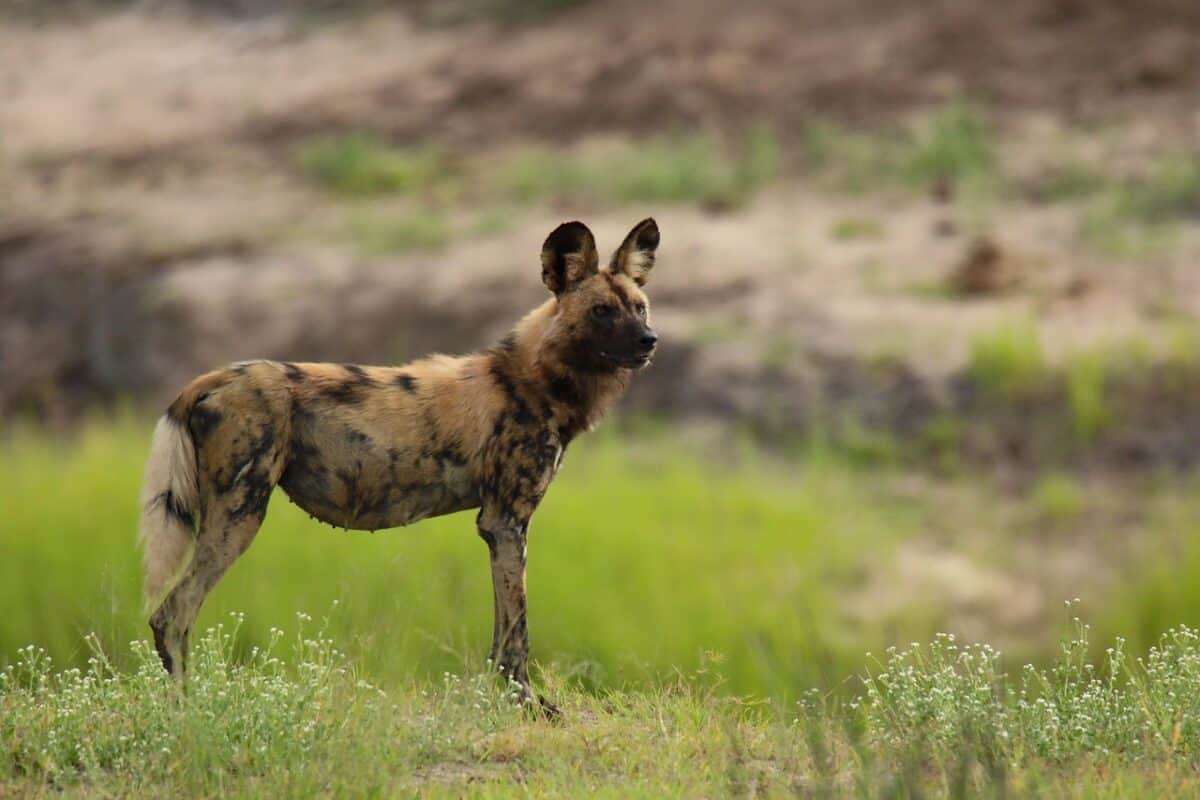
The New Guinea Highland Wild Dog represents one of the most recent and exciting rediscoveries in the animal kingdom. This canid, believed to be the most primitive and ancient dog-like animal in existence, was thought to have disappeared from its native habitat in the New Guinea Highlands. The last confirmed sightings dated back to the 1970s, with unconfirmed reports occasionally emerging but no scientific verification. That changed dramatically in 2016 when an expedition to Papua’s remote central mountain spine found a thriving population living at elevations of about 3,500 meters. DNA analysis confirmed these were indeed New Guinea Highland Wild Dogs, with a genetic lineage dating back 6,000 years, making them potentially older than domesticated dogs. With their howl-like vocalizations (they don’t bark like domestic dogs), ginger-colored coats, and remarkable climbing abilities, these dogs represent a living link to canine prehistory and offer researchers invaluable insights into dog domestication and evolution.
Takahe New Zealand’s Flightless Wonder

The takahe (Porphyrio hochstetteri) exemplifies New Zealand’s unique evolutionary history, where birds evolved without mammalian predators and often lost the ability to fly. This large, flightless bird with brilliant blue and green plumage was common before human arrival but declined rapidly afterward. By 1898, after decades without sightings, scientists declared the takahe extinct. However, in 1948, physician and naturalist Geoffrey Orbell rediscovered a small population in a remote valley of New Zealand’s South Island. The discovery made international news, as it was one of the first major rediscoveries of a species thought extinct. Today, following intensive conservation efforts, including captive breeding and predator control, the takahe population has grown from fewer than 200 birds in the 1980s to over 450 individuals by 2022. While still endangered, the takahe’s return from presumed extinction highlights the importance of protecting remnant habitats and the possibility that other “extinct” species might still persist in unexplored regions.
Chacoan Peccary The “Living Fossil” of South America
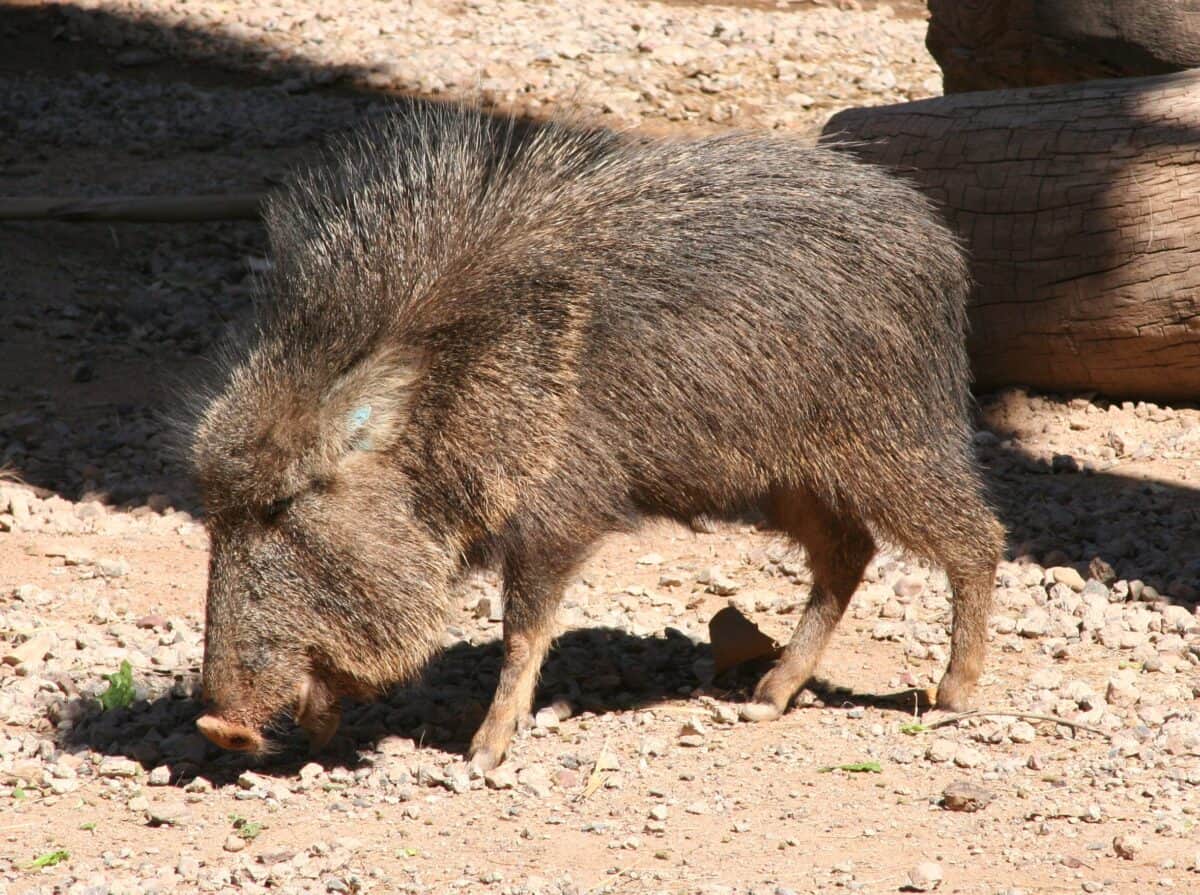
The Chacoan peccary (Catagonus wagneri) represents a remarkable case of a species first discovered as fossils and only later found alive. Paleontologists had classified this peccary species as extinct for at least 10,000 years based on fossil records. However, in 1975, researchers were astonished to discover living populations in the Gran Chaco region of Paraguay, Bolivia, and Argentina. Local indigenous people had long known about the animal, calling it the “tagua,” but it remained unknown to science. This pig-like mammal possesses unique adaptations for survival in the harsh, dry Chaco environment, including a specialized digestive system that can process toxic plants and efficient water conservation mechanisms. The Chacoan peccary’s rediscovery after being classified as long extinct earned it the nickname “the living fossil.” Today, the species faces serious threats from habitat loss due to agricultural expansion, with an estimated population of fewer than 3,000 individuals remaining in the wild, making its conservation a priority.
Terror Skink The Lizard With a Fierce Bite
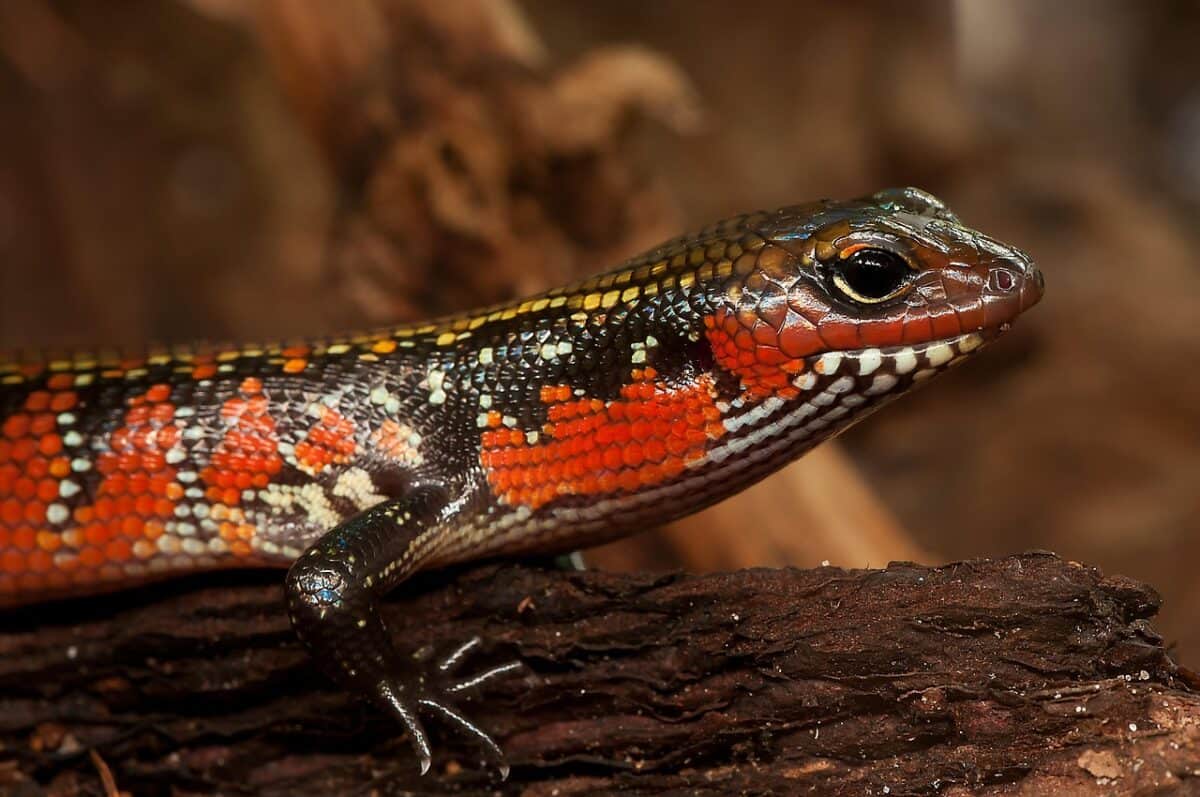
With a name befitting a creature from prehistoric nightmares, the terror skink (Phoboscincus bocourti) is a large lizard native to the tiny Isle of Pines off New Caledonia in the South Pacific. This formidable reptile, which can grow up to 50 centimeters long, was originally known from a single specimen collected in 1876. After more than 100 years without any further sightings, the species was presumed extinct until its rediscovery in 2003 by a team of French scientists. What makes this skink particularly noteworthy are its large, curved, fang-like teeth – unusual among skinks, which typically have small, undifferentiated teeth. These dental adaptations suggest a predatory lifestyle, with the terror skink likely hunting other lizards and large invertebrates. Since its rediscovery, only a handful of specimens have been documented, indicating an extremely limited population restricted to a small island habitat. As with many rediscovered species, the terror skink immediately became a conservation priority, highlighting the importance of protecting even small, seemingly insignificant island ecosystems.
Cuban Solenodon The Venomous Mammal

The Cuban solenodon (Solenodon cubanus) represents one of the world’s most unusual mammals – a rare example of a venomous mammal. This ancient insectivore, which resembles a large shrew with a long, flexible snout, has been evolving independently for over 70 million years. After several decades without confirmed sightings, many feared it had gone extinct due to habitat loss and predation by introduced species like cats and mongooses. In 2003, however, researchers captured a live specimen in eastern Cuba’s mountainous region, confirming that this living fossil still persisted. What makes solenodons remarkable is their venomous saliva, delivered through specialized grooved teeth – a trait shared with very few mammals. The Cuban solenodon remains critically endangered, with perhaps fewer than 100 individuals remaining in isolated mountain habitats. Its rediscovery emphasized that even in relatively accessible regions, elusive species can persist undetected, especially those with nocturnal habits and specialized habitat requirements. Conservation efforts now focus on habitat protection and controlling invasive predators to give this evolutionary marvel a fighting chance at survival.
Omiltemi Cottontail Rabbit Mexico’s Lost Lagomorph

The Omiltemi cottontail rabbit (Sylvilagus insonus) is among the world’s rarest and least-known lagomorphs. Endemic to a small region in the Sierra Madre del Sur mountains of Guerrero, Mexico, this rabbit was known to science from only four specimens collected in 1904 and a single specimen from 1998. After extensive surveys failed to find the species, it was feared extinct due to habitat destruction, logging, and agricultural expansion. However, in 2011, researchers working in the high-elevation cloud forests of Guerrero documented fresh evidence of the rabbit’s continued existence. Unlike most cottontails, which favor open habitats, the Omiltemi cottontail is adapted to dense, humid cloud forests at elevations above 2,000 meters. Its isolated mountain habitat likely contributed both to its distinct evolution and its ability to evade detection for so long. The rabbit remains critically endangered, with an estimated population of fewer than 250 mature individuals. Its rediscovery highlights the biodiversity significance of Mexico’s mountain ecosystems and the urgent need for their conservation in the face of ongoing deforestation and climate change.
Black-footed Ferret America’s Conservation Triumph

The black-footed ferret (Mustela nigripes) represents one of North America’s most iconic conservation success stories. These sleek predators, specialized to hunt prairie dogs in the grasslands of the American West, were once abundant across the Great Plains. However, as prairie dog colonies were exterminated by farmers and ranchers (who considered them pests), the ferrets lost both their prey base and their habitat. By the 1970s, they were presumed extinct until a ranch dog in Meeteetse, Wyoming, brought home a dead ferret in 1981, leading to the discovery of a small surviving colony. Disaster struck again when this population was devastated by disease, leaving just 18 individuals in existence by 1987. These last ferrets were captured for an emergency captive breeding program that has since become a model for endangered species recovery. Through intensive breeding and reintroduction efforts, black-footed ferrets have been released at multiple sites across their historical range. By 2022, approximately 300-400 ferrets existed in the wild, with several hundred more in captivity. While still endangered, their comeback represents a rare success in recovering a species that teetered on the edge of extinction.
Fernandina Giant Tortoise Galápagos Mystery Solved
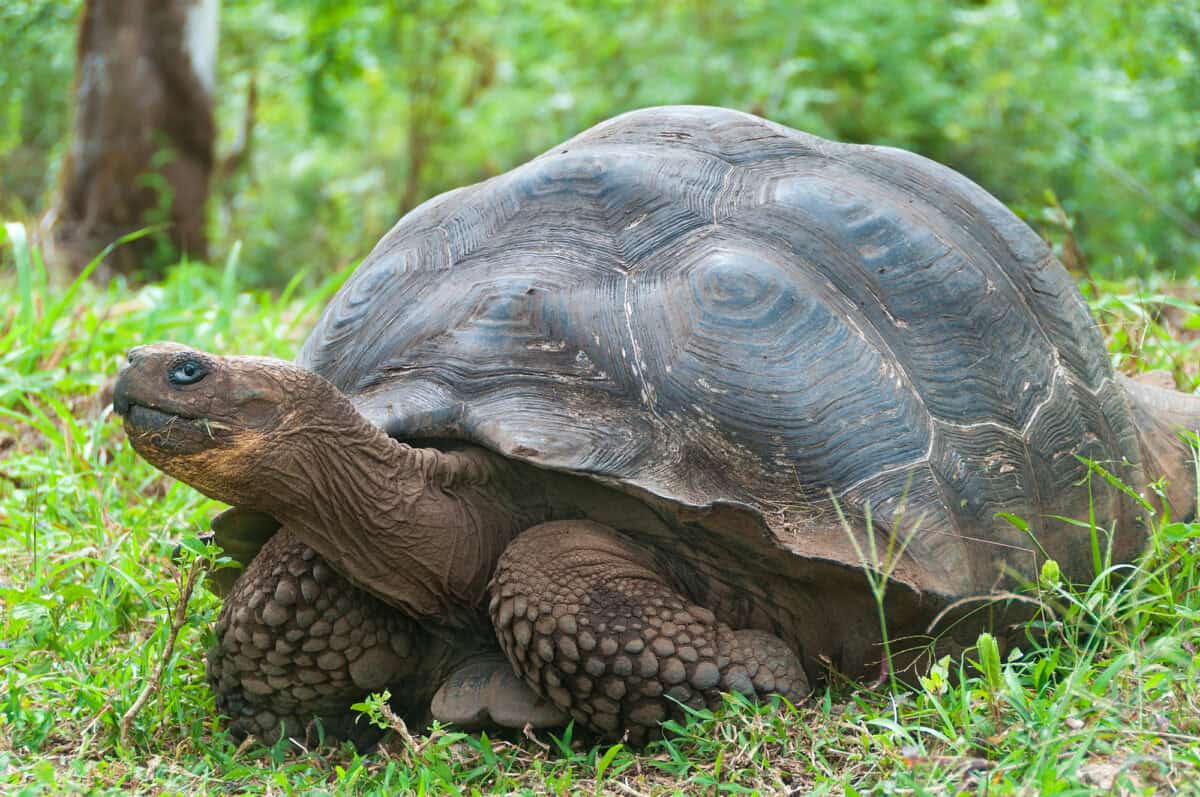
The Fernandina Giant Tortoise (Chelonoidis phantasticus) was known only from a single specimen collected in 1906 on Fernandina Island in the Galápagos archipelago. For over a century, scientists believed this tortoise species had gone extinct, with extensive surveys of the island failing to find any living individuals. However, in February 2019, an expedition made a remarkable discovery – a lone female tortoise living in an isolated patch of vegetation on the island. Genetic testing confirmed that this individual, nicknamed “Fernanda,” was indeed a member of the species thought extinct for over 100 years. What makes this rediscovery particularly significant is that Fernandina Island hosts one of the Galápagos’ most active volcanoes, creating a harsh environment where few would expect a giant tortoise to survive. Scientists are now searching for other potential survivors, particularly males that could help establish a breeding program. The discovery of the Fernandina tortoise demonstrates how even large animals can escape detection on remote islands and raises hope that other “extinct” Galápagos tortoise species might still survive in isolated pockets of habitat.
Silver-backed Chevrotain Vietnam’s “Mouse-Deer” Returns

The silver-backed chevrotain (Tragulus versicolor), also known as the Vietnamese mouse-deer, represents one of the most recent and exciting rediscoveries of a species presumed extinct. This diminutive ungulate, about the size of a rabbit, had been known to Western science from just five specimens – four collected between 1907 and 1918, and a fifth in 1990. With no further sightings for nearly 30 years, many feared the species had succumbed to intensive hunting pressure and habitat loss. However, in 2019, camera traps set by Global Wildlife Conservation and local partners captured images of the elusive chevrotain in a Vietnamese forest. This tiny deer-like animal lacks antlers but males sport elongated canine teeth or “tusks” used in territorial disputes. Chevrotains are considered living fossils, resembling the earliest ancestors of modern deer, cattle, and antelope. The rediscovery highlights Vietnam’s biological importance – the country has revealed several other presumed-extinct species in recent decades, including the large-antlered muntjac and Edwards’s pheasant. Conservation efforts now focus on determining the chevrotain’s range and establishing protected areas to ensure its long-term survival.
Hope for the Future What These Rediscoveries Mean
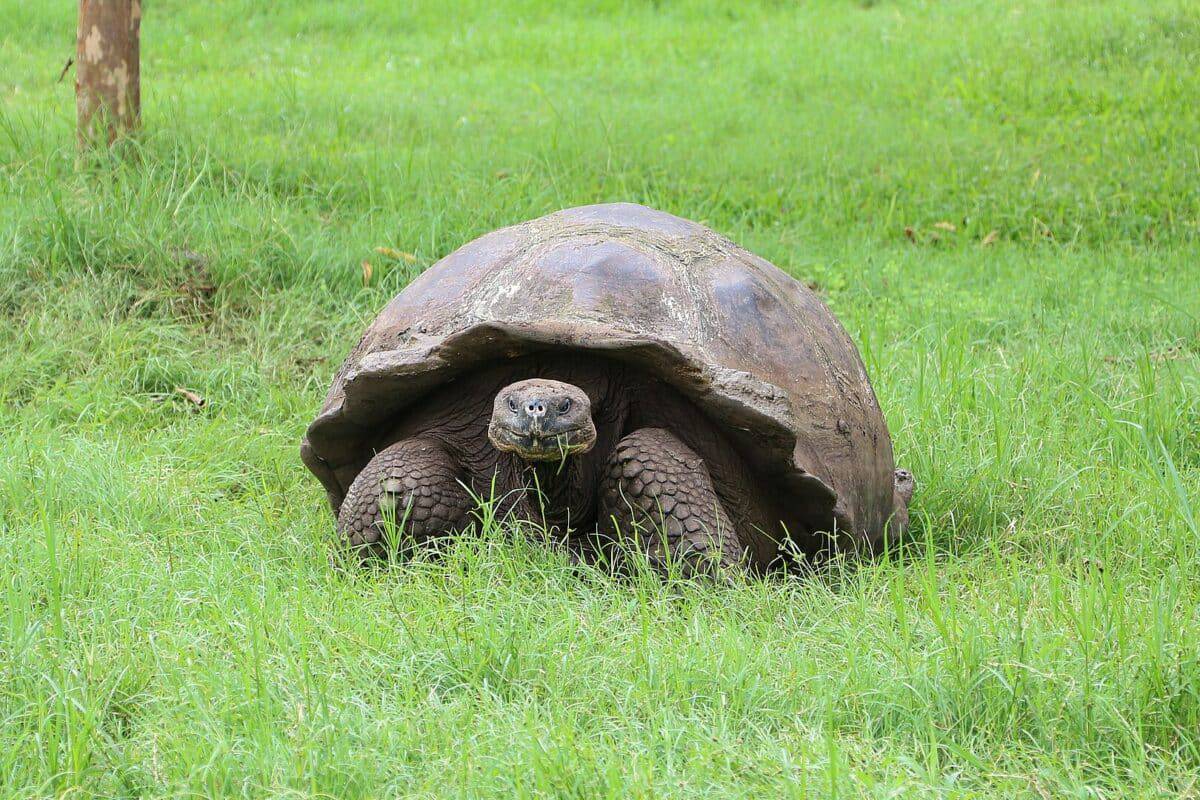
These 12 remarkable stories of species returning from presumed extinction offer powerful lessons for conservation in the 21st century. First, they remind us that absence of evidence is not necessarily evidence of absence – just because a species hasn’t been seen doesn’t mean it’s gone forever. Many animals persist in remote, unexplored regions or have behaviors that make detection difficult. Second, these rediscoveries highlight the critical importance of protecting habitat even when target species appear to be lost; without intact ecosystems, rediscovered species have no hope for recovery. Third, they demonstrate that conservation interventions can work, even for species reduced to tiny populations, as shown by the black-footed ferret and Bermuda petrel recoveries. Finally, these living “Lazarus species” provide a counterpoint to the current extinction crisis. While we are indeed losing biodiversity at an unprecedented rate, nature’s resilience occasionally offers us second chances. In a time when environmental news is often bleak, these rediscoveries provide much-needed hope and inspiration for conservation efforts worldwide. They challenge us to redouble our commitment to protecting Earth’s biodiversity, knowing that some species we believe lost might still be out there, waiting to be found again.
- 12 Fascinating Shark Facts And 3 That Are Totally Wrong - August 21, 2025
- 11 Animals That Can Clone Themselves - August 21, 2025
- 15 Cat Breeds Vets Secretly Wish You’d Stop Buying - August 21, 2025

